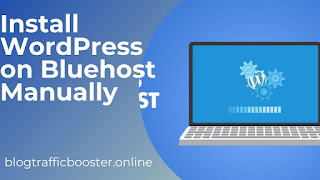How to Install Wordpress on Bluehost: Complete Tutorial - 2021 Edition
How to Install WordPress the RIGHT WAY – Complete Tutorial (2021)
When A WordPress blog or database centric platform, one of the things you need to do is create a database. Thanks to many auto installer scripts, which do the job for you, but there are times when you have to create the database manually. The step to create a database is quite easy on many web hosting that offers standard cPanel.

Yesterday I migrated a WordPress blog from GoDaddy to Bluehost and to complete the process I had to manually create the database. For newbies, creating a database may not be that easy, and this tutorial will be helpful for learning the full process.
Remember that Bluehost offers cPanel by default, and this tutorial, for example, applies to all cPanel hosting companies (Hostgator, SiteGround, Hostmonster) that offer cPanel hosting.
Manually create a WordPress database on Bluehost or cPanel hosting.
Keep in mind that this step is only necessary as most auto install scripts will automatically create and link a database. For example, when you install WordPress on Bluehost using this tutorial, it will automatically create a database for you.
On some hosting, when you need to install manuallyWordPress, creating a database is part of the process and you need to follow this tutorial to create one for your new blog.
Here’s the step-by-step process:
- Log into your Bluehost account
- Click on go to cPanel, which is cPanel by default.
- Under databases, click MySQL databases.Under
New database name for the database you want to create. You can use anything like “WP” “WordPress”. In this example I am using WordPress.
Once we create the database, we need to create a username / password and associate it with the created database.
Here’s how to do it:
Click Go back after creating the database. Now, on the same page, MySQL Users, click and add a new user and password. You can use any username you want and use the password generator to generate the password. Also write down the MySQL username and password in a note file for future reference.
Read Also:
- Bluehost Black Friday: 60% OFF MAXIMUM - 2021 Edition - Blog Traffic Booster (No.1 Blog)
- How to Activate SSL certificate for BlueHost Hosting - 2021 Edition - Blog Traffic Booster (No.1 Blog)
- How to submit Bluehost Affiliate Tax Form for Non-US Residents - 2021 Edition - Blog Traffic Booster (No.1 Blog)
So far we have manually created a database, MySQL user and password. And now we only have to link the database to the created user. On the same page, you will see an option for ‘Add user to database’.
Click Add, on the next page you need to give all rights to the MySQL user to access the database. Just check everything on the next page and click Make changes.
This is it; now your newly created database is ready to be used for WordPress or any other self-hosted platform you are using. As I mentioned above, the process of creating a manual database will be the same on all cPanel hosting. If you’re stuck or have any questions about this, feel free to ask through comments.










No comments: